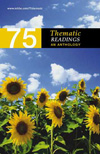
Frederick Douglass |  |
Frederick DouglassFrederick Douglass, "Learning to Read and Write" Frederick Douglass (1817-1895) was born into slavery outside the town
of Easton, Maryland. Defying tremendous odds, Douglass secretly taught
himself to read and write, and later escaped slavery, settling in the
free state of Massachusetts. He became a well-known women's rights leader,
public speaker, and abolitionist. Douglass also published a newspaper
called The North Star and served as a presidential advisor to Abraham
Lincoln during the Civil War. Douglass's writing style—bold, strong, and
direct—mirrors the other aspects of this great man's life. His books include
the autobiographies My Bondage and My Freedom (1855) and The
Life and Times of Frederick Douglass (1882). "How I Learned to
Read and Write," one of the most eloquent arguments for universal
literacy ever written, is taken from Douglass's autobiography Narrative
of the Life of Frederick Douglass, An American Slave (1845). | QUESTIONS FOR DISCUSSION | CONTENT - About how long did it take Douglass to learn to read and write?
- Explain why the author doesn't want to reveal the names of the little
boys mentioned in paragraph four.
- Describe the author's most successful strategy in learning to read
and write.
- Name a book Douglass recounts as having a lasting impact on his life.
- Discuss the author's encounter with the Irishmen in paragraph seven.
- Why did slave owners not want slaves to be literate?
- What is Douglass's relationship to Master Hugh's wife? How does it
change over time? Name some of the important factors in this change.
STRATEGY AND STYLE - "Learning to Read and Write" is a narration about a part
of one specific man's life, but it has widespread importance. What are
some of the ways Douglass makes this more than just the story of a single
individual? Where in the essay did you go to support your answer?
- Douglass uses the phrase slave for life twice in close succession.
What impact do the repetition and the punctuation have?
- How can you relate the bread imagery in paragraph four to Douglass's
views about the relationship of the mind to the body?
- This piece was written in the middle of the 19th century.
Review it looking for words that were difficult for you to understand,
due to this time difference. (If the words ell, trump,
and larboard were familiar to you upon first reading, you can
skip this exercise.) List these words and their meanings. What are some
effective ways for you to bridge this gap in time, in this and other
similar readings?
| ENGAGING THE TEXT | - What are some of your earliest memories of learning to read and write?
Contrast the contexts of your learning process and the author's. Did
this essay make you look at literacy in a new way? Explain.
- Describe your feelings as you read this essay. Did you become emotionally
involved? Explain. If you didn't, what things might you be taking for
granted?
| SUGGESTIONS FOR SUSTAINED WRITING | - Douglass suggests that becoming literate was painful and difficult
in a number of different ways. Write about two of them, using examples
from your reading. What explains his determination in this regard, given
these difficulties?
- Write an essay discussing the use of animal imagery throughout this
essay. How does the use of this imagery further the author's ideas about
slavery and freedom?
| FOR FURTHER RESEARCH | Consult your text to pick either Alice Walker's "Beauty:
When the Other Dancer Is the Self" or James Baldwin's "Notes
of a Native Son" to read or reread. Then, write a comparison/contrast
paper about it and your reading here. Do enough research to be comfortable
contrasting the relevant historical periods. | WEB CONNECTION | Take a look at this photo
of Douglass from Matthew Brady's studio, which now is a part of the collection
at the Library of Congress. What can you tell about Douglass from studying
the photo itself, its date, its creator, and its present owner? | LINKS | Biographical Looking for a place to start your online research of Douglass's
life? This biography
is divided into hyperlinked chapters, and also contains links to a chronology
of his life, and some links for further reading. This brief biography
contains hyperlinks and a portrait of Douglass. You'll also find some
links for further reading and to associated sites here. The homepage of
The Frederick Douglass Museum & Cultural Center has a photo of Douglass,
a biographical sketch, and links to Frederick Douglass resources.
Bibliographical Would you like to take a look at a complete work by Douglass in
etext? Click
over to the library at the University of Virginia, where you'll find
the entire book, My Bondage and My Freedom. This edition of
Douglass's Narrative, his first autobiography, is supplemented
by navigation help and reading aids. You'll also have a chance to provide
feedback about this valuable online project. Here's a newspaper
article about women's rights Douglass wrote for the abolitionist
newspaper the North Star in 1848.
Cultural Interested in writing about slavery in the U.S.? This chronology
of U.S. statutes concerning the topic is a useful research tool from
the Yale Law School. As you know from your work on Douglass, reading and writing were
central to his life as a free man. Why not take a visit to the National
Institute for Literacy's site to
see what you can learn there? Here's a site
where you can hear the actor Norman Matlock read a speech written by
Douglass entitled "An Appeal to the British People." Douglass
first delivered this anti-slavery speech in 1846.
|
|
|
|